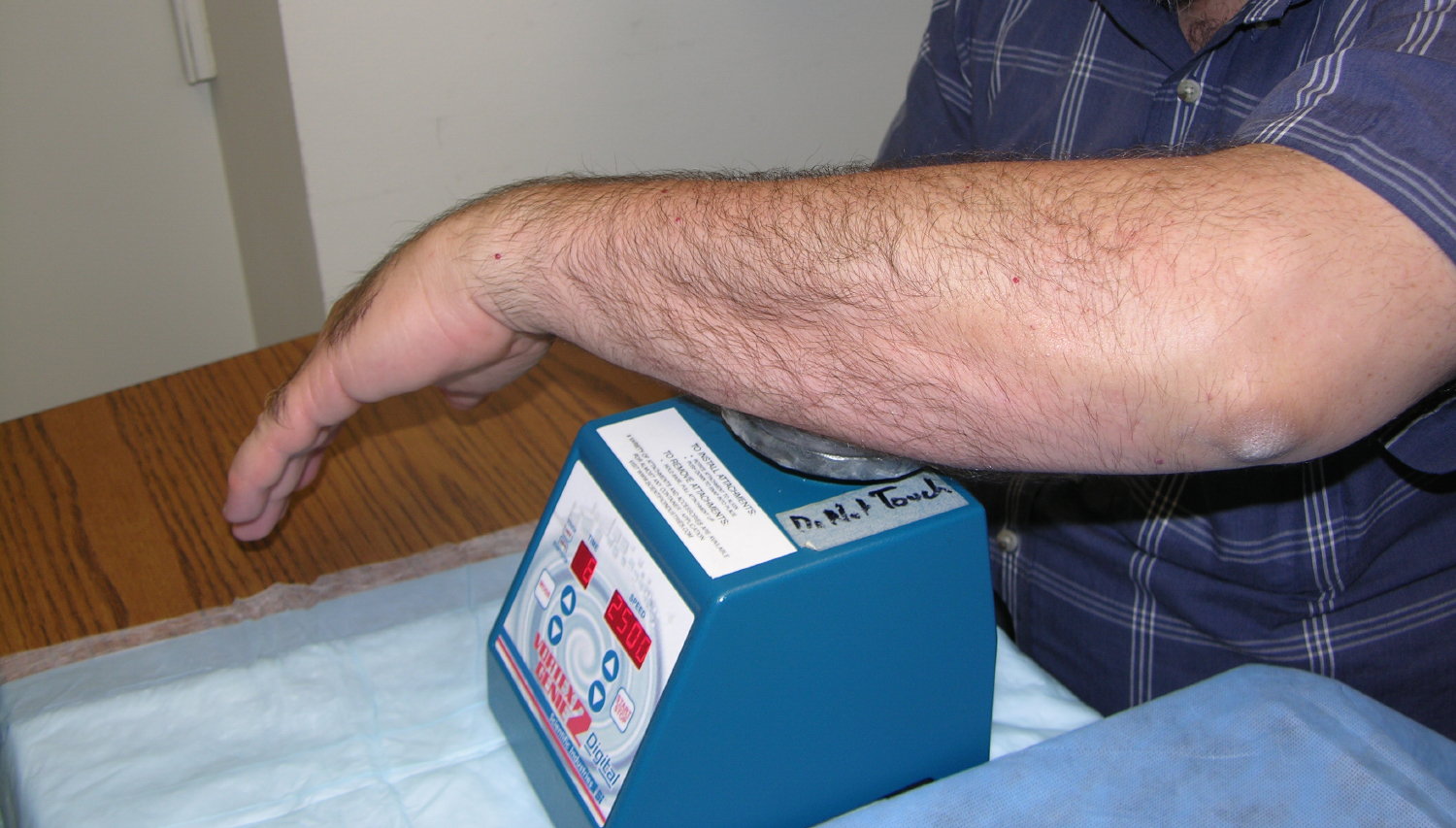Content on this webpage is provided for historical information about the NIH Clinical Center. Content is not updated after the listed publication date and may include information about programs or activities that have since been discontinued.

Scientists at the National Institutes of Health have identified a genetic mutation responsible for a rare form of inherited hives induced by vibration.
Scientists at the NIH have identified a genetic mutation responsible for a rare form of inherited hives induced by vibration, also known as vibratory urticaria. Running, hand clapping, towel drying or even taking a bumpy bus ride can cause temporary skin rashes in people with this rare disorder. By studying affected families at the NIH Clinical Center, researchers discovered how vibration promotes the release of inflammatory chemicals from the immune system's mast cells, causing hives and other allergic symptoms.
Their findings, published online in the New England Journal of Medicine on Feb. 3, 2016, suggest that people with this form of vibratory urticaria experience an exaggerated version of a normal cellular response to vibration. The study was led by researchers at the National Institute of Allergy and Infectious Diseases (NIAID) and the National Human Genome Research Institute (NHGRI), both part of NIH.

